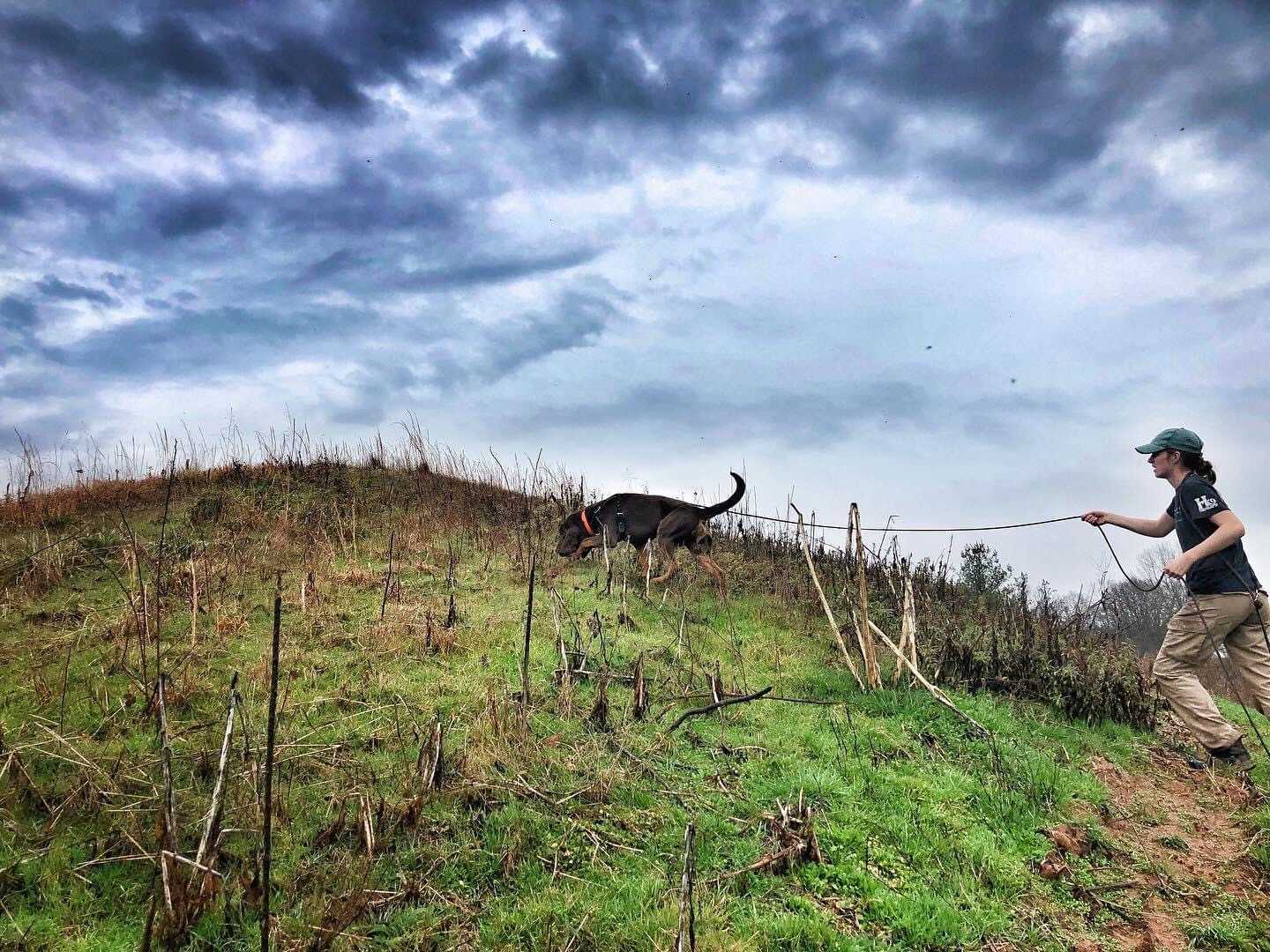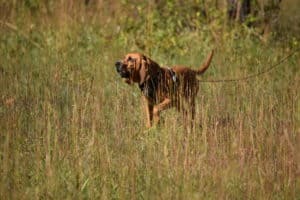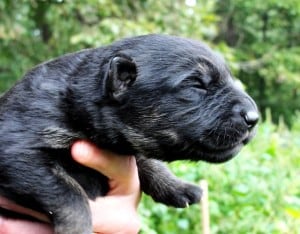Trailing dogs are used to locate suspects and missing people by ‘trailing’ their odor to source. Trailing dogs are expected to work in a variety of locations and in multitudes of environments while ignoring distractions and all other odors.
Unlike tracking dogs, who locate individuals by following individual footsteps and vegetation decomposition trails, trailing dogs utilize the ground and the air to follow an individual’s scent. As a human moves, they create a unique odor trail through the loss of skin grafts, sweat and other odor producing molecules. A trailing dog is capable of detecting these odor molecules, whether they are stuck on the ground, trapped in vegetation or floating through the air.
Using a trailing dog is typically faster, more efficient and sometimes more effective than using a tracking dog. This is because trailing enables dogs to follow odor as quickly as possible to source by cutting corners and taking shortcuts to the person they are searching for. This makes them an incredibly valuable tool for law enforcement units and SAR teams alike.
Why is teaching scent discrimination important?
Trailing dogs are meant to be scent-specific workers. Unlike an air scent dog, who is trained to locate any human odor, trailing dogs are expected to acknowledge and follow a single trail to source.
If trailing dogs are not taught to scent discriminate, they will not be capable of ignoring the vast array of additional human odors possibly crossing over the desired trail, or the dozens of other people present at crime scenes or searches. If a trailing dog is not able to scent discriminate, it will be virtually useless in most situations where trailing dogs are typically used.
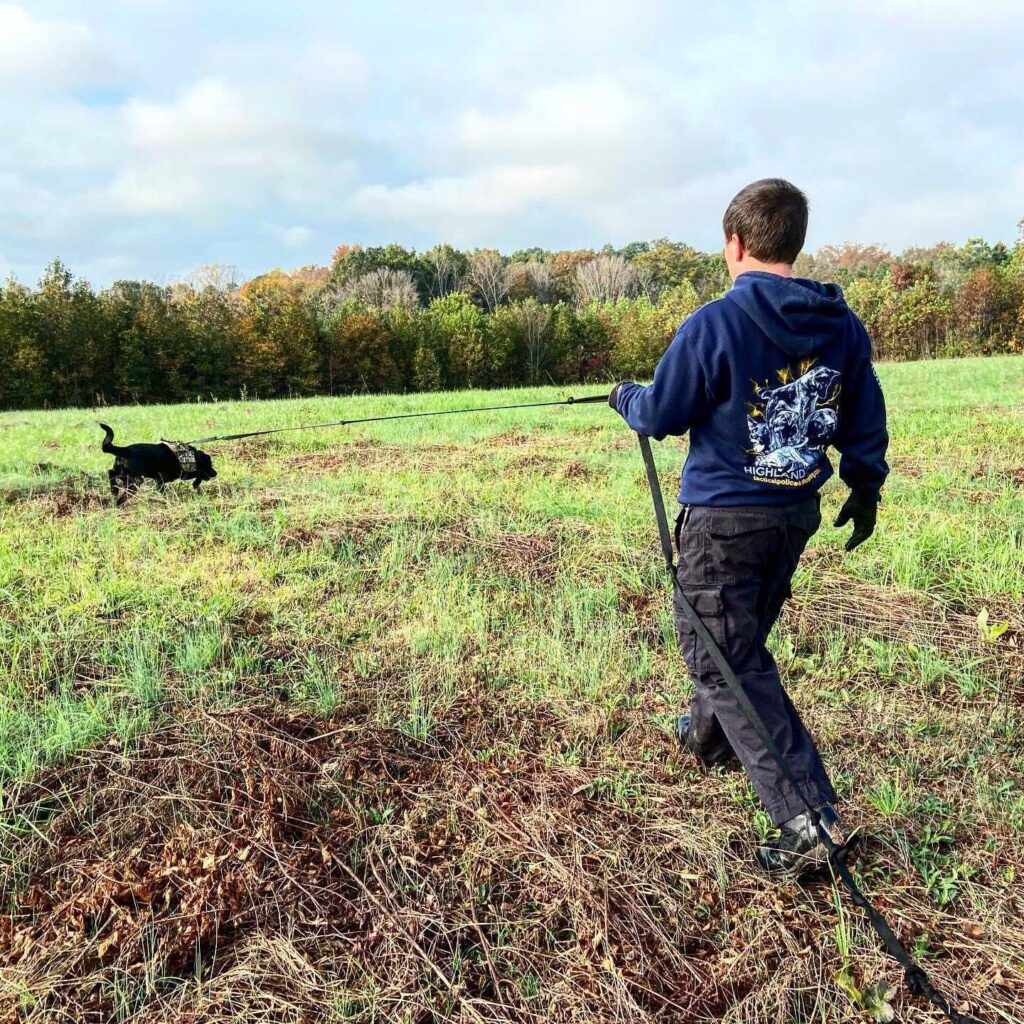
How do trailing dogs scent discriminate?
All human beings have a unique odor “fingerprint.” Our individual odors are created through a variety of components including health and dietary factors, biological makeup, age, hormone levels, cosmetic products and other types of residue. All of these factors combine to scent the skin grafts leaving our body, as well as the other odor molecules that we naturally produce.
With proper training, dogs can learn to discriminate one individual’s odor even when that scent is mixed with the odors of others, as well as recognizing the individual whom that odor belongs to. Scent discrimination is a crucial skill that trailing dogs, especially Law Enforcement K9s and search dogs, need to possess. It is also something that needs to be continuously improved upon for the working life of the dog.
A dog who fully understands scent discrimination will be able to follow and maintain the correct trail even in high traffic areas, ignoring those passing by or other distractions, and finally locating the correct individual and communicating to the handler when they have been located. Whether on the trail of a missing person or a suspect, this is an incredibly important skill to assist in a successful deployment. Without this vital training, dogs are likely to get distracted by other residual human odors, animal trails, and other individuals that may be seen along the trail.
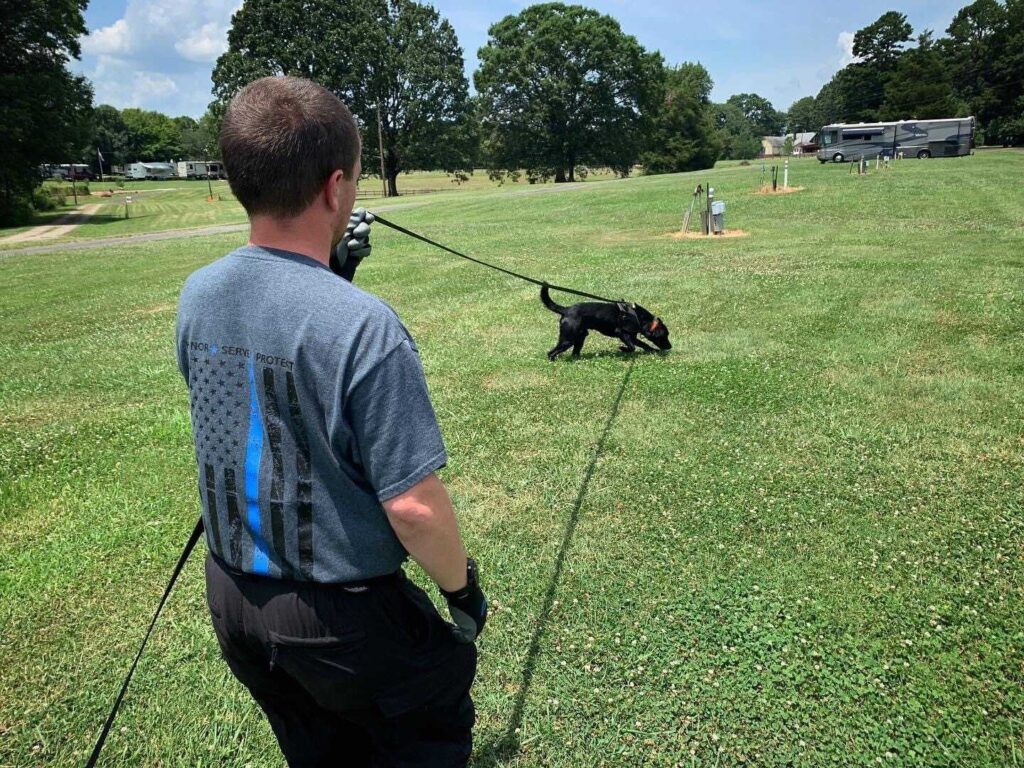
Teaching scent discrimination
If you are working to train a trailing dog or improve the skills of your current trailing dog, correctly teaching scent discrimination is a critical skill to optimizing your dog’s effectiveness. The first step in teaching scent discrimination is to make sure the dog is already working human odor successfully in uncontaminated areas and across multiple surface types and terrains. A dog should already fully understand how to identify and follow human odor without their handler’s guidance or cuing before they begin learning how to choose the correct trail in contaminated areas.
Once your dog is to the point where they have effectively located multiple individuals in different environments for the amounts of time and distance desired, it is time to begin teaching them to work through contamination. The best way to do this is to strategically set up contaminated trails in such a way where you are still setting your dog up for success. Only begin with one additional human odor, and lay the second (contamination) trail in a straight line directly crossing the correct trail. Ensure that this second trail is laid at such a distance where your dog is able to identify the correct trail first and follow it for a little way. The contamination should be laid prior to the correct trail and given several minutes to age.
This will result in the dog naturally wanting to stick with the fresher trail, making it significantly easier to choose the correct human odor over the contamination trail. Dogs naturally prefer to follow fresher scents, so this is an easy way to introduce contamination in a way that is straightforward for them to work through. Once a dog can consistently cross old contamination trails, it is time to slowly begin decreasing the amount of time between the contamination trail and the correct trail. Eventually, you can lay them at the same time, or even begin laying the contamination trail after the correct trail has been run.

As the dog’s skill continues to grow, multiple contaminated trails can be set either crossing or merging with the correct trail. Setting trails up like this will force the dog to problem solve and work harder to choose the correct trail, regardless of the trail’s age, and follow it to its conclusion. With consistent and positive based training methods that allow the dog to learn systematically, they will eventually become operationally successful even in the most heavily contaminated environments.
Scent discrimination is a vital skill for any trailing dog. Whether it be used for search and rescue or for law enforcement, trailing dogs need to be able to remain on their target trail even with distractions and other human odors. With patience and strategic planning, scent discrimination can be effectively taught to a trailing dog, consequently making them much more successful in operational environments.

